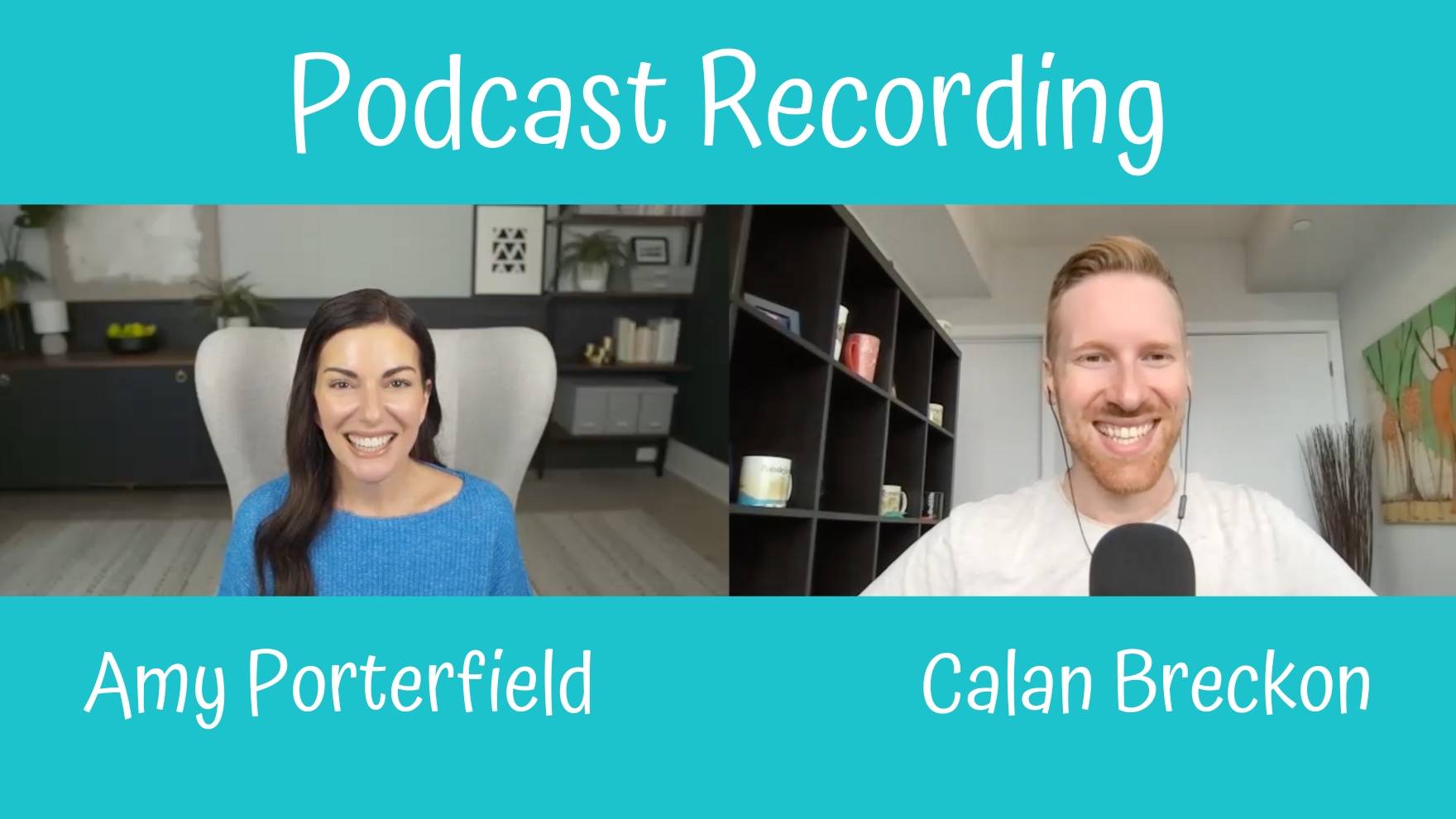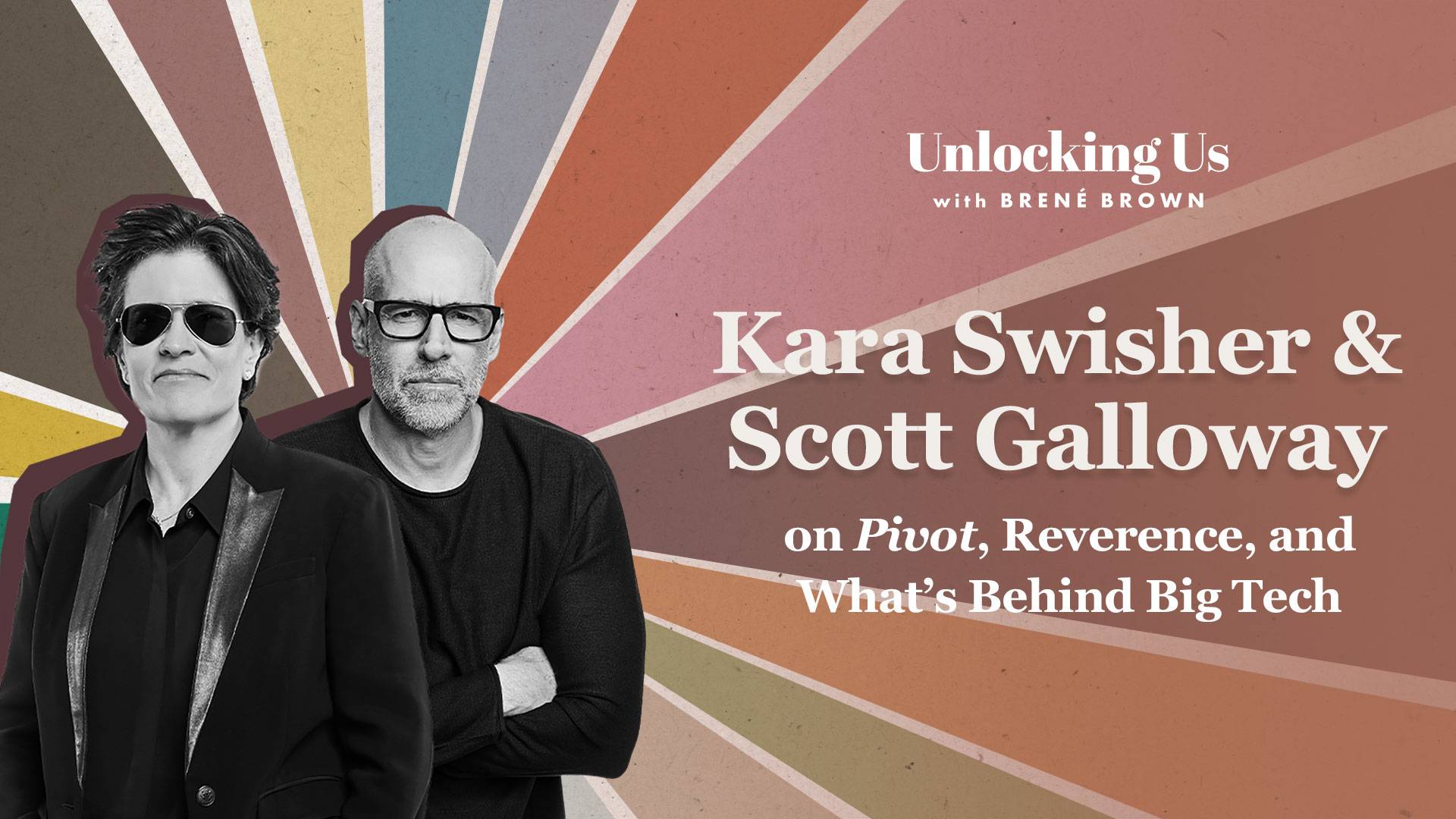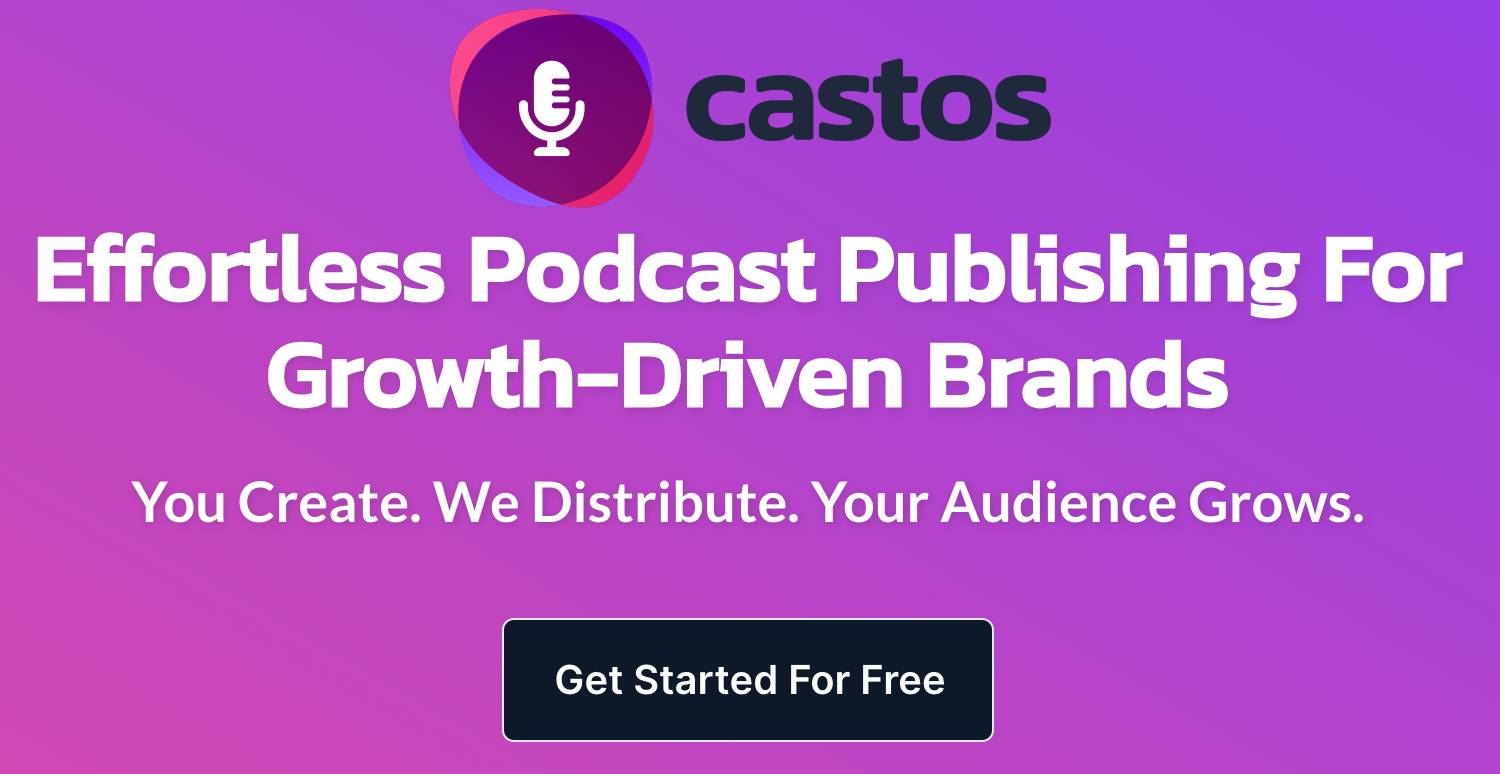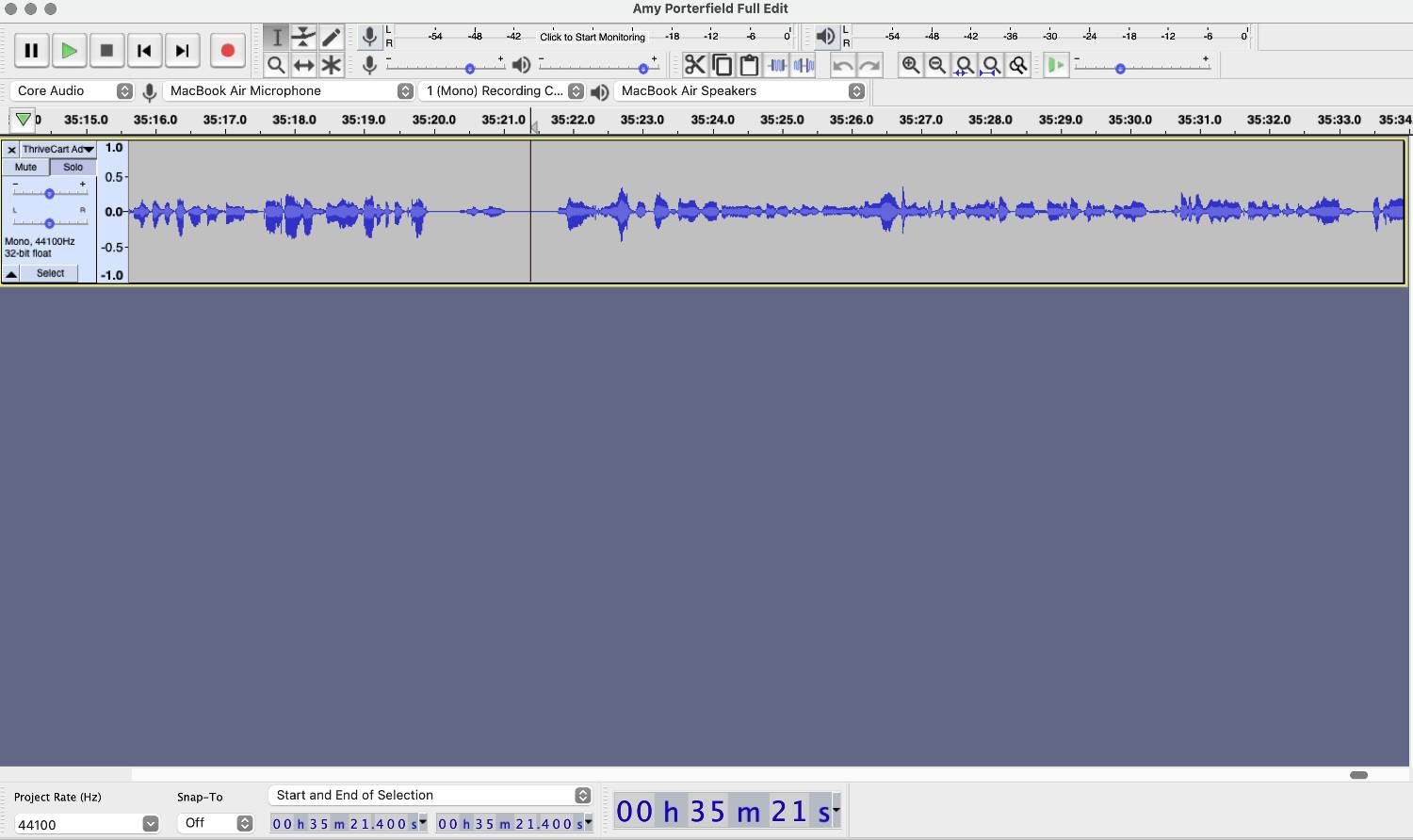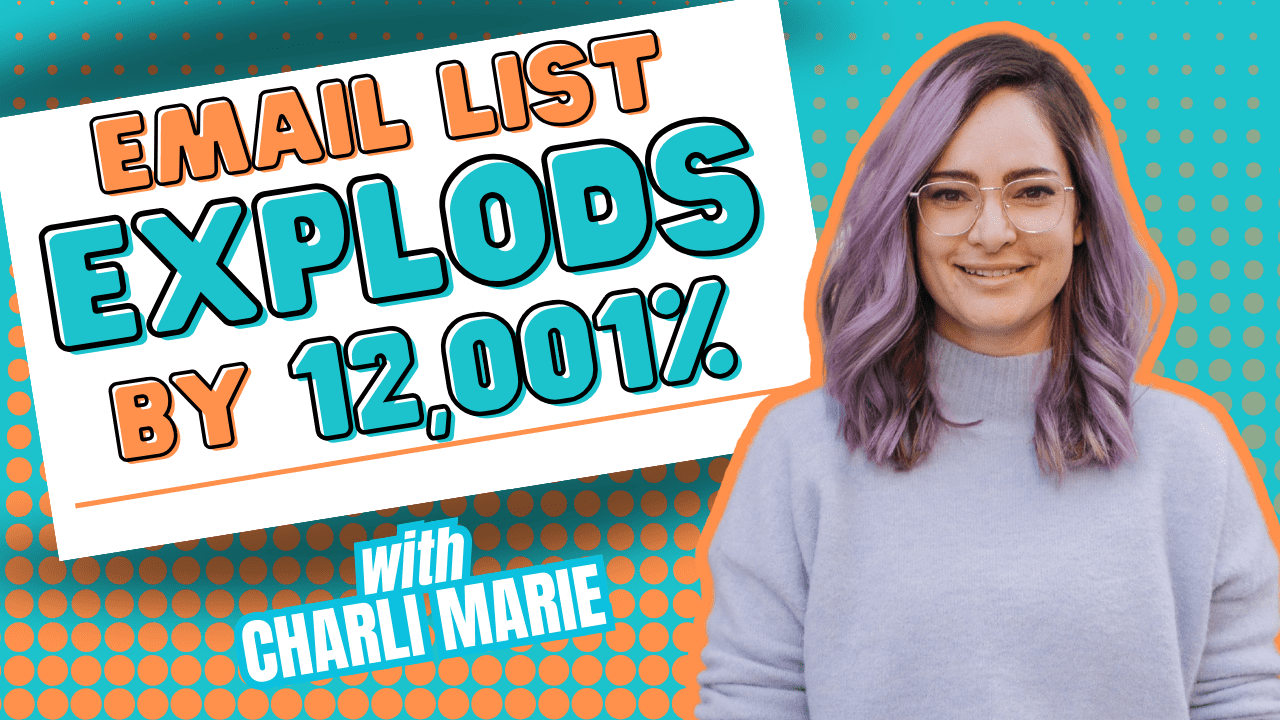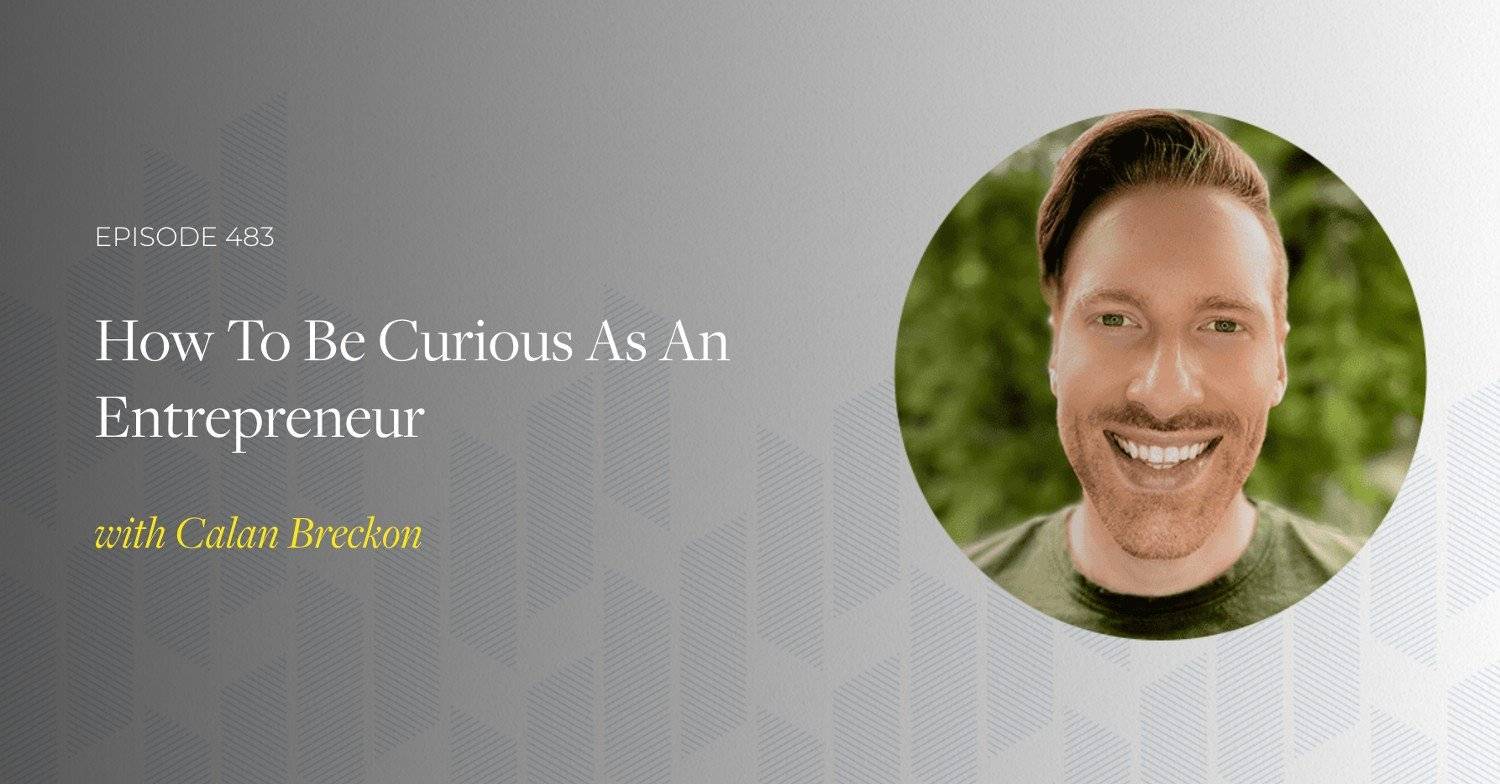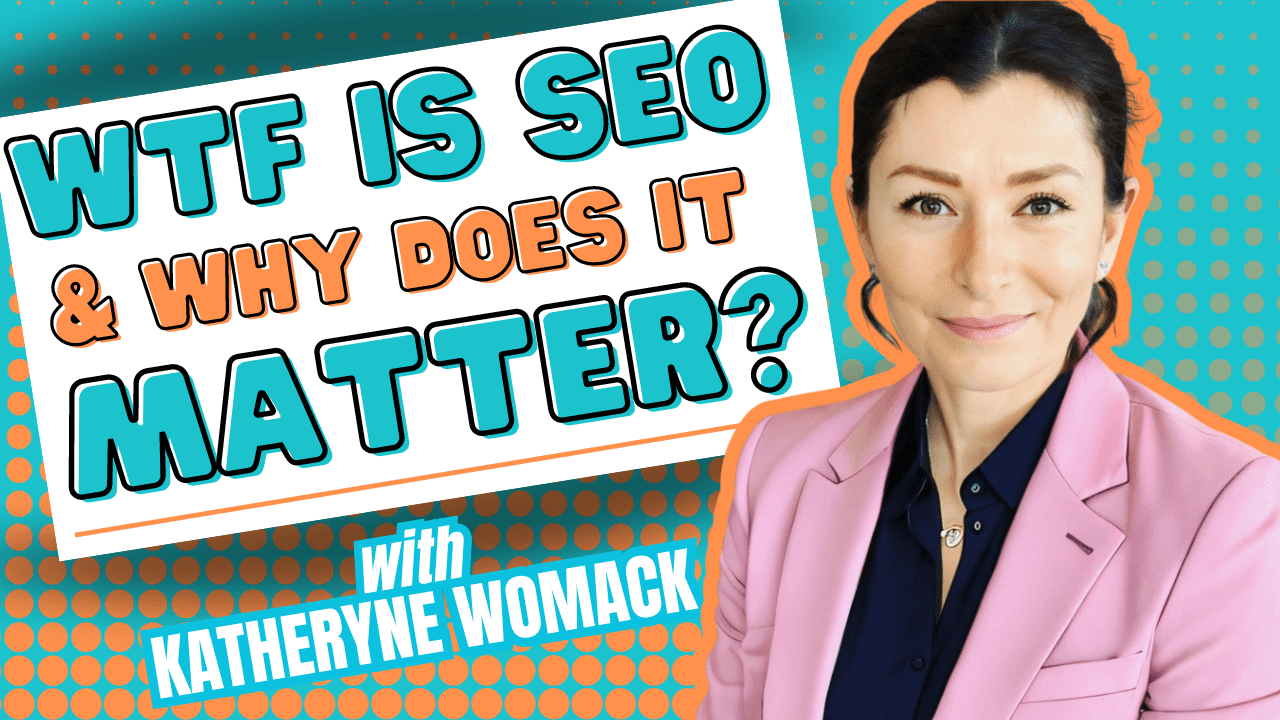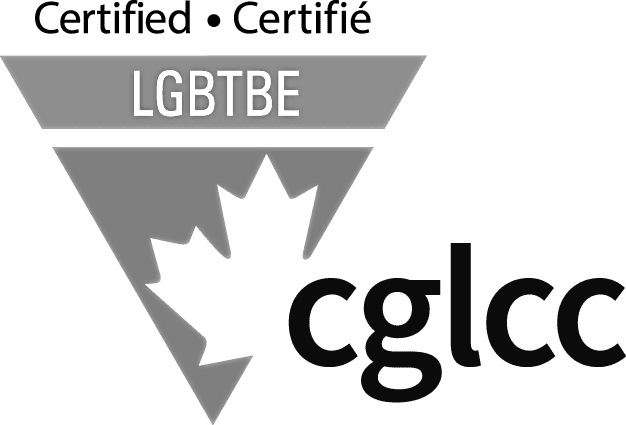Calan Breckon • Published September 23, 2023
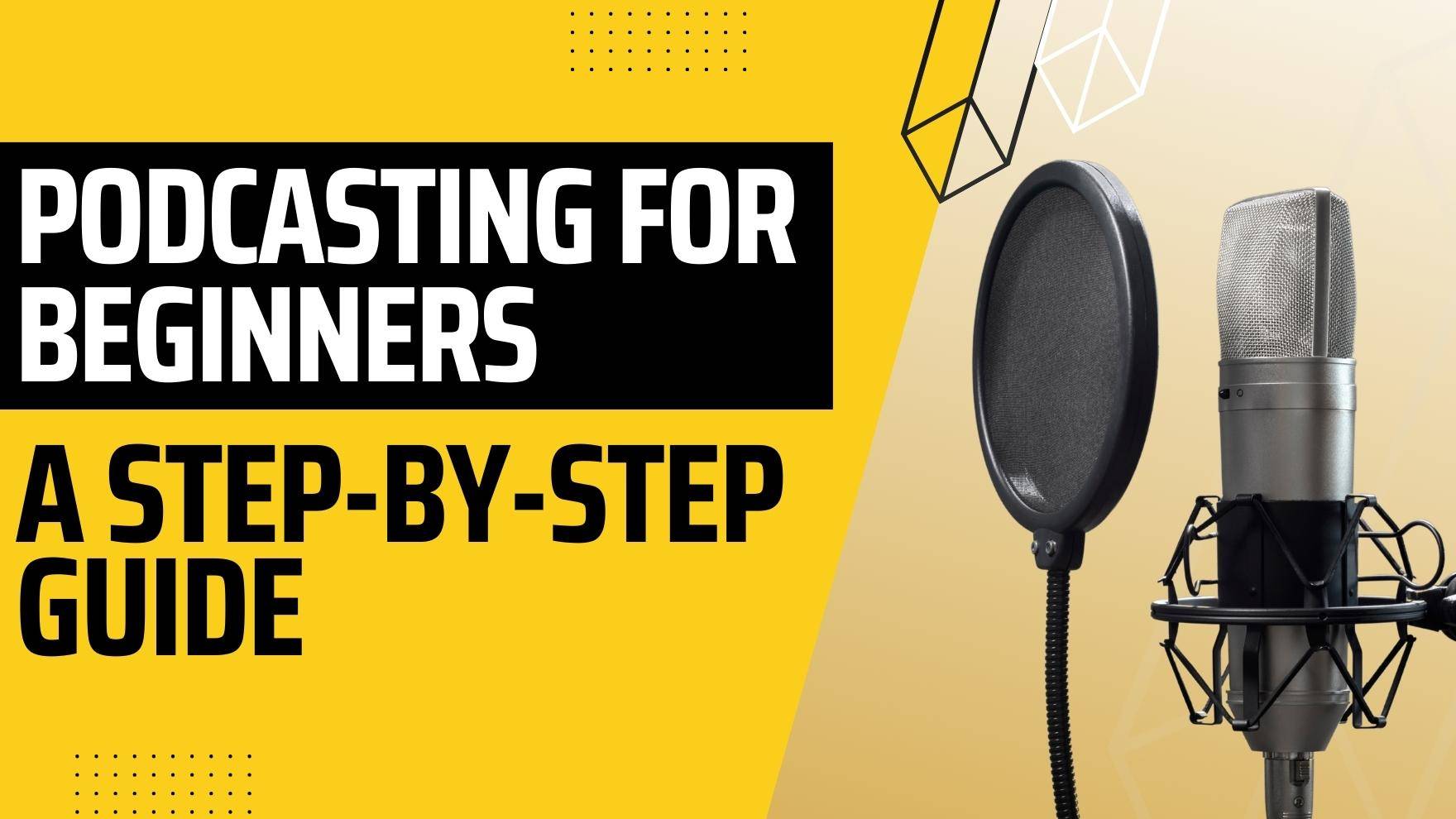
Podcasting has become a cultural phenomenon, offering a unique platform for individuals to share their thoughts, stories, and expertise with a global audience. If you’re new to podcasting, you might be wondering how to get started and what it takes to create a successful podcast. In this comprehensive guide, I’ll walk you through the essential steps and information you need in order to embark on your own podcasting journey.
I’ve been podcasting for over 3 years now and have learned a LOT about how to build a successful and sustainable podcast that serves your audience, builds you an asset, gets consistent downloads, brings in advertising revenue, and continues to grow month over month.
Short Summary
- Podcasting: Intro and popularity.
- Benefits: Reach, branding, income.
- Essentials: Niche, gear, software, promotion.
- Growth: Engagement, analytics, monetization.
- Challenges: Copyright, consistency, burnout.
Introduction
What is podcasting?
I’m sure if you’re here then you already know what podcasting is, but if you’re SUPER fresh then here are the footnotes.
Podcasting is a form of digital media that allows individuals to create and distribute audio and/or video episodes to an online audience. Unlike traditional radio or television, podcasts are on-demand, which means listeners can tune in at their convenience.
The popularity of podcasting
Over the past decade, podcasting has witnessed exponential growth. With millions of podcasts and episodes available on various topics, it has become a powerful medium for entertainment, education, and communication.
There is roughly 1 blog website for every 6 people in the world. For comparison, there is only 1 podcast for every 6,000 people in the world. So, if you’re looking for a competitive edge, or you think you’re already too late to the podcasting game, think again!
You still have loads of time to build and grow a successful podcast.
Why Start Podcasting?
Benefits of podcasting
1. Reach a global audience
One of the most significant advantages of podcasting is the ability to reach a worldwide audience. Your content isn’t limited by geographical boundaries, making it accessible to anyone with an internet connection.
2. Build your brand
Podcasting provides an opportunity to establish yourself as an authority in your niche. Consistent, valuable content can help build trust and credibility within your target audience. You don’t need to be the “expert” to have a successful podcast. All you need to do is interview the experts on your show. This way you will get to learn and grow alongside your audience!
3. Share your passion
Whether you’re passionate about storytelling, a specific hobby, or a cause, podcasting allows you to share your enthusiasm with like-minded individuals. When you get to have a real conversation with someone who is focused on a topic you’re really excited about your passion shines through. Don’t be afraid to let your excitement and personality shine through. Your audience will love this about you and you’ll attract the right people as listeners for your show.
4. Monetization opportunities
Podcasts can be monetized through things like sponsorships, advertising, merchandise sales, and even listener donations. I’m going to go more in-depth on this topic later on in this post, so keep reading because I have some tactics I’m sure you never even thought about.
Planning Your Podcast
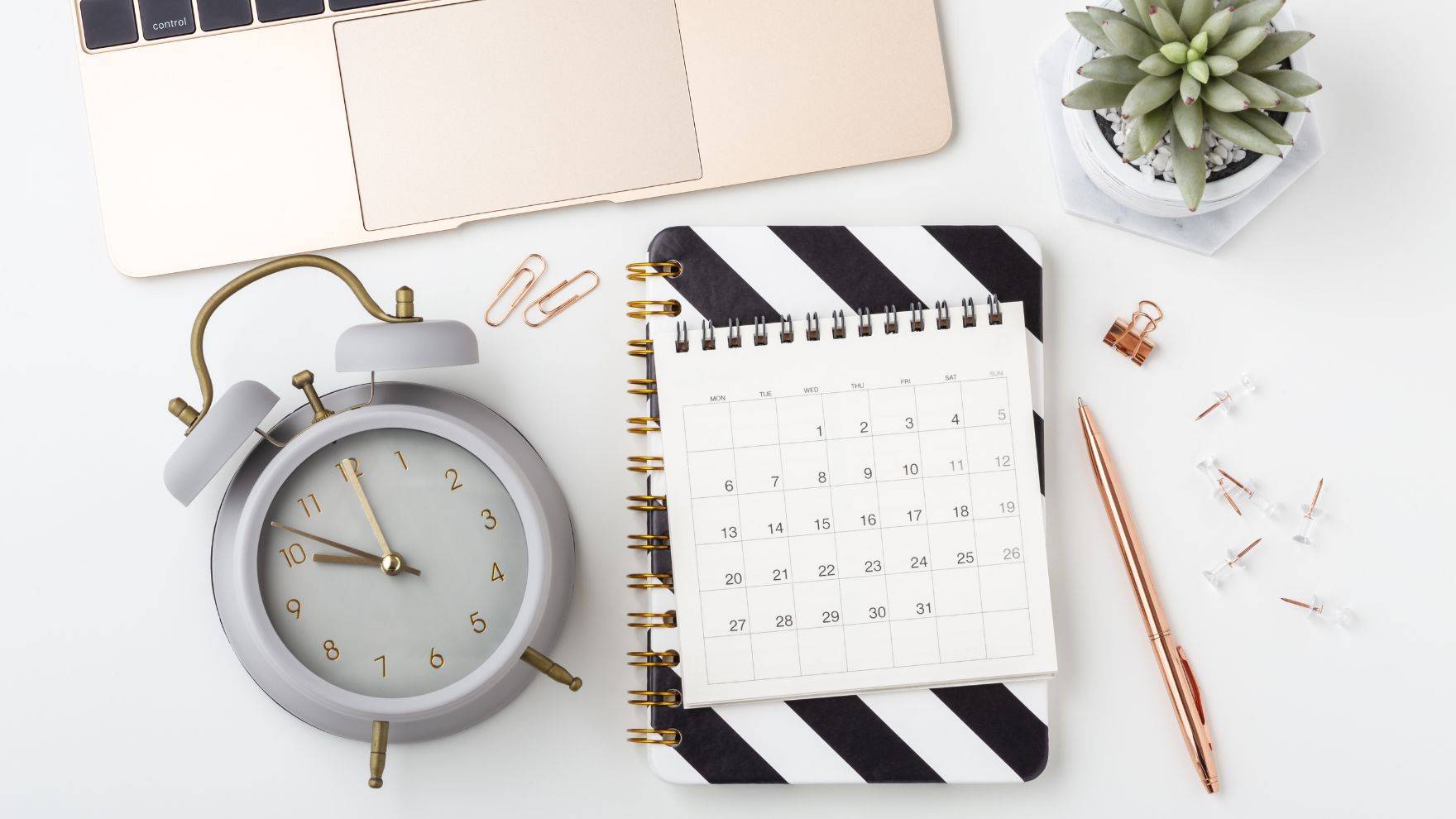
Choosing your niche
Select a topic that genuinely interests you and has an audience. Passion for your subject matter will keep you motivated and engaged throughout your podcasting journey. My podcast is all about business, marketing, and entrepreneurship because I’m an entrepreneur and these topics interest me. I also know that these topics interest a LOT of people out there so the chances of my show doing well are high.
You can pick any niche that is interesting to you, just make sure you have enough interest to keep it going for the long run.
Defining your target audience
Identify who your ideal listener is. Understanding your audience’s needs and preferences will help you tailor your content to resonate with them. Using mine again as an example again, I know that entrepreneurs like actionable tips and advice on how to grow their businesses. I make sure that in each interview I do I’m asking my guest to provide actionable tips that the listeners can apply in their own businesses to help them succeed.
Creating a podcasting schedule
If you’re going to be starting a podcast from scratch and you want it to be successful, you need to create a schedule and stick to it.
There is nothing worse than finding a show that you enjoy and then all of a sudden, they stop releasing episodes or they miss a week or two. This creates distrust with your listeners and you will lose followers because of it. Then, all that hard work you’ve done goes down the drain.
What I like to teach people launching a podcast is to record a bunch of episodes before you even launch. Having a backlog of episodes ready to go will save you when you get sick, have a dry spell for guests, or want to go away on holiday.
Scheduling out a lot of recordings up front and getting them “in the bucket” for later will save you so much stress.
Create a schedule that works for you and always try to have at least 1 month’s worth of episodes ready to go. Most professional podcasters I know and work with will record episodes months in advance so that they never get caught with their pants down.
Episode format and structure
Decide on the format of your episodes. Will they be interviews, solo discussions, or a mix of both? Create a template for episode structure to maintain a cohesive flow.
I have a notes template that I use to map out each episode for every guest I have on my podcast. It makes getting everything ready super simple and much faster for me.
I also use a template for editing my episode’s artwork that I have saved in Canva as well as an audio editing template I use inside of my Audacity for editing the show theme music and such.
Creating templates to work from will save you so much time when it comes to producing your show, especially if you’re a one-person show (for now).
Essential Equipment and Software

Microphones
Invest in a good-quality microphone to ensure you will have clear audio. There is nothing worse than having a tinny-sounding audio for the listener. USB microphones are suitable for beginners, while XLR microphones offer professional sound quality.
I started off with a simple $100 USB mic from Amazon and it did the trick for the first few years. I’m now at the point where I’m probably going to upgrade to an XLR. There are a ton of options out there so do some shopping around and read the reviews. As this isn’t a review post I’m not going to list any of them here because that would be a whole post all on its own.
Headphones
A pair of comfortable headphones is essential for monitoring audio quality during recording and editing. I always use hardwire headphones while I’m recording because the number of times people have had issues with their wireless is too many to count. I also ask my guests to use hardwire headphones to make all our lives easier.
Even if your headphones have a mic, you still want to invest in a good USB or XLR one. The headphones are simply for listening to your guests and doing audio editing.
If you really can’t afford a mic right now then headphones with a mic will do but make getting a mic a priority.
If your guests only have headphones with a mic as their option, then that’s okay.
Recording and editing software
Choose user-friendly software for recording and editing your podcast. Popular options include Audacity (which is free), Adobe Audition, and GarageBand.
I personally use Audacity because it’s a pretty simple and easy-to-use editing software and I’ve been using it for years. You can also change the file formats to any audio format you need so it’s great for quick fixes.
I also use Zoom to record all my interviews. I do this for 2 reasons:
- I get the audio and video files to use.
- It’s super easy and most people are familiar with it.
You don’t need to get super fancy with your recording. You have all the time in the world to grow and upgrade your podcast, but for now, a simple Zoom recording will do the job.
Plus, you’ll be able to upload the video onto YouTube and create a YouTube channel that will eventually generate ad revenue as well as drive more listeners and more traffic to you. It’s killing two birds with one stone since it takes almost no extra effort to record a video while recording the audio.
Hosting and distribution platforms
Selecting a reliable podcast hosting platform to store your audio files and generate an RSS feed is one of the most important decisions you’re going to make.
As someone who has hosted on multiple different platforms and done my homework as to what is the best one, take my advice when I say you do NOT want to have to migrate your podcast hosting later down the road. It’s a pain in the butt, takes ages, can be super technical and complicated, and runs the potential of damaging or hurting your podcast listener’s ability to listen.
Really take your time with this decision and figure out what you need.
My personal suggestion is to use Castos, and I have a few reasons as to why.
When I was shopping around for hosting platforms I specifically wanted one that integrated seamlessly with my WordPress website. The reason for this is that I wanted to host the podcast on my website so that I could drive more traffic to it and drive up my SEO rankings on Google.
Most hosting platforms don’t do this. They allow you to host your podcast on their platform and it drives traffic to THEIR website, improving their SEO rankings inside of Google.
You’re the one building the show and the content, you should be the one benefiting from all that hard work.
So, once I realized that Castos allowed me to host on my own WordPress website through their Seriously Simple Podcast plugin I was sold. And it paid off big time.
The first podcast I was part of ended up building a Domain Rating of 34 (out of 100) with a bunch of great organic backlinks to it because I was hosting the podcast through our website using Castos and their Seriously Simple Podcasting plugin. It also helped to drive traffic from Google when people would look up topics in our niche.
I would never build a podcast any other way from now on after seeing how beneficial it is to host your podcast on your own website.
Yes, I am biased here, but I have my background is in SEO optimization and it drives me crazy that people are leaving money on the table and not setting themselves up for success simply because they don’t understand how impactful it can be to their show and their website growth.
But, if Castos isn’t for you, other common choices include Libsyn, Podbean, Buzzsprout, and Blubrry. Yes, a lot of them are “free” but just think about what I told you. Nothing in life is ever truly free, and if they are hosting your show, they are getting all the benefits from it and taking advantage of your ignorance.
Paying to host your podcast on Castos is a small price for reaping all the benefits in my opinion, but you’re the captain of your own podcasting ship so do what’s right for you.
Recording Your Podcast
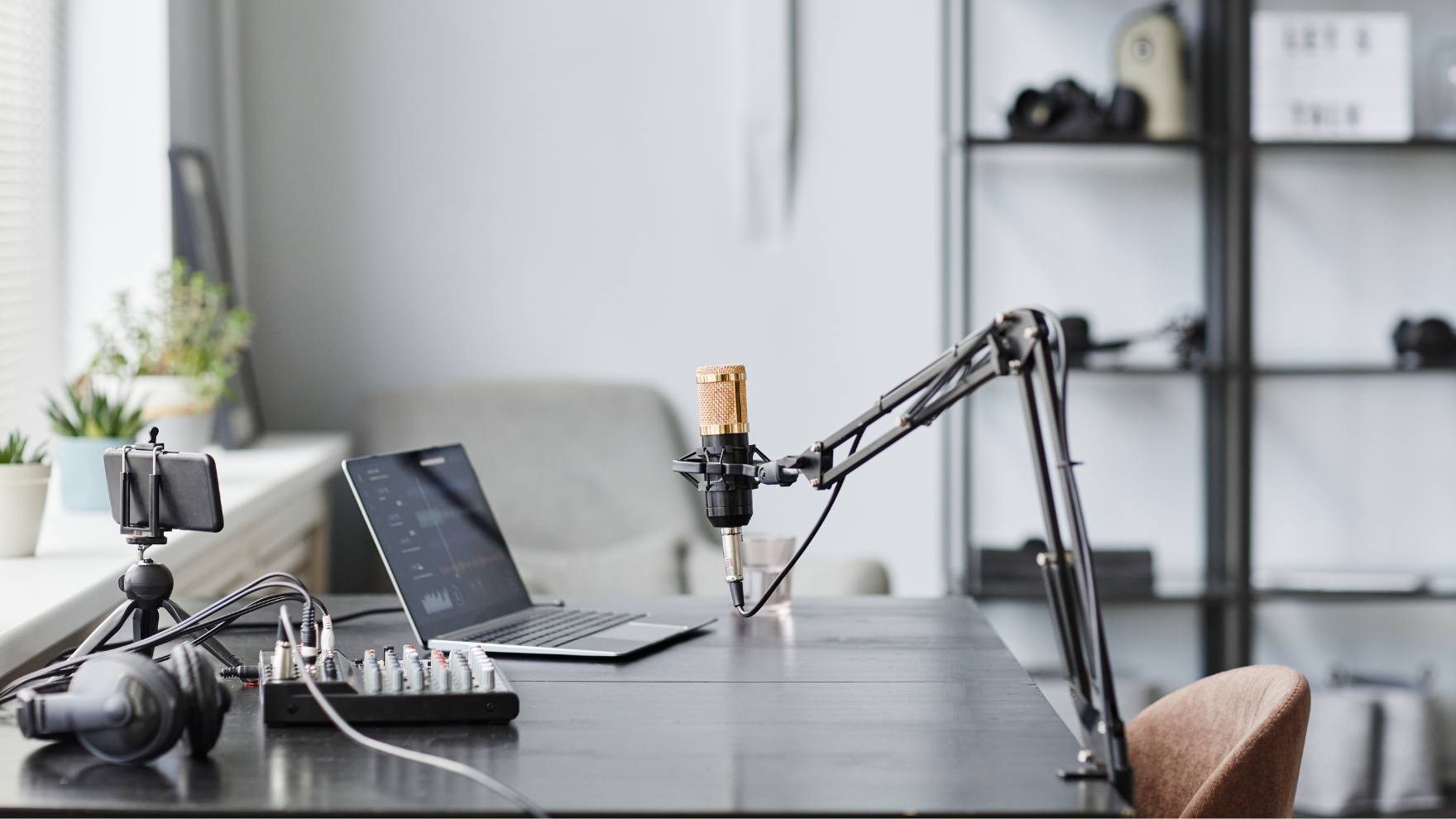
Setting up your recording space
Do your best to create a quiet, well-insulated space for recording. You can use things like pillows, blankets, or acoustic panels to minimize background noise, but these aren’t mandatory.
Sometimes you can’t help a little bit of noise, but as long as you’re doing your best to minimize any outside sounds then you’ll be fine to start things off. As your show grows you can get fancier and improve things.
Recording tips for beginners
My biggest tip is: don’t speak over your guest.
There is nothing worse than when people speak over each other and it’s hard for the listener to understand. Really try your best NOT to say all those “yes, omg, mhmmm, I see’s” in your conversation.
I get that it’s human nature to acknowledge understanding when another person is talking but, on a podcast, and over audio, it just adds noise in the background that will make it harder for your listeners to listen.
What I do now is nod along, give a thumbs up, or “raise the roof,” gesture silently so the guest can see that I’m down with what they’re saying but I do my best not to make noise until they are completely finished with their thoughts and then I respond accordingly.
This takes some time to get used to but trust me, listen back to your first few recordings if you do this and you’ll see what I mean.
Dealing with nerves and mistakes
It’s normal to feel nervous initially. Embrace imperfections and remember that editing allows you to fix mistakes (if you want).
Once you get a good number of interviews or episodes under your belt, things will become easier, but a little bit of nerves is a good thing. It means you care about your listeners and the final product you produce.
I personally do not do any editing to my recordings. The video goes straight to YouTube as is and the audio only gets edited to add in the ads off the top and the introduction I pre-recorded for the guest, then the outro. That’s it.
I think people like the imperfections when someone goofs, laughs, fumbles, etc. It adds personality to the show and lets your listeners know that you’re a real person with flaws just like everybody else.
Scripting vs. improvisation
Decide whether you’ll script your episodes or speak off-the-cuff. Find a balance that suits your style and content.
I like to script out my intros for my guests and pre-record them as well as my outros for the episode. For the actual interview I’ll draft up questions and send them to my guest beforehand so we both have an idea of where the conversation is going to go but then during the actual recording, I allow room for play and discovery.
The questions I draft are just guideposts to help keep the conversation flowing in the right direction, but I’ve had times where we were completely vibing and got into a bunch of other things that weren’t part of my questions, but the interview turned out so much better because of it.
Give yourself the grace for that wiggle room if you aren’t purely going off-the-cuff.
Editing and Production
Editing your podcast
Like I said before, I really don’t do a lot of editing for my podcast, but if you really want to go for it you can edit out long pauses, mistakes, or irrelevant content to create a polished final product.
You can enhance your podcast with music and sound effects to engage your audience and create a unique atmosphere. But make sure you have the rights to use that music and those sound effects.
If you listen to my podcast, the theme music was paid for so that I could use it and I pay a yearly fee to Audio Network in exchange for being able to license that music.
Creating podcast artwork
This is probably going to be the first thing people see when they come across your podcast so make sure that you design eye-catching artwork that represents your podcast visually.
I created mine using Canva after looking around Apple Podcasts charts to see what other people were doing and to collect ideas. You want to stand out but you also want people to be able to see and read whatever you design when it’s shrunk down in size.
Creating an intro and outro
Like I said before, I pre-record all my intros and outro’s for my episodes so that they’re nice and clear. I also edit in my theme music to add to the fun. Crafting a memorable intro and outro for your podcast helps establish your podcast’s identity and makes it more enjoyable for the listener.
Keep in mind, I know tons of podcasts that don’t do this and still have huge listener counts, but if you want to seem a little more professional and add some pizazz it’s a great idea to edit them in.
You should also create a show trailer that will live on most platforms like Apple Podcast and Spotify in the “trailer” spot for your show. This is a great way to let people know what your show is about and how often they can look forward to new episodes coming out.
Publishing Your Podcast
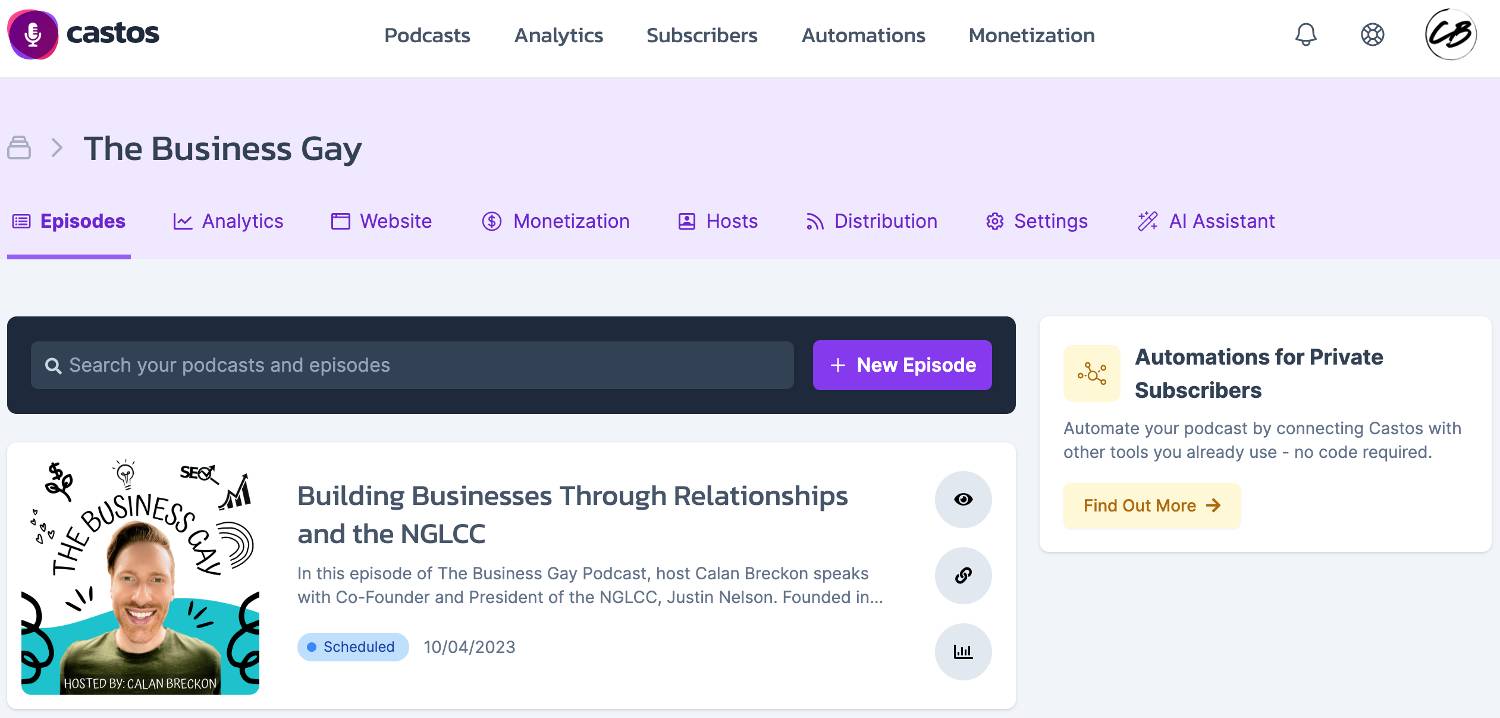
Uploading your episodes
Every podcast hosting platform has a way for you to upload your podcast to their network. If you choose to go with Castos and use the Seriously Simple Podcasting plugin for WordPress then you will be able to upload your podcast episodes as if they were a blog post, making it easy for you to schedule and publish episodes.
It may seem like you’re “hosting” your podcast on your website, and you are for SEO purposes. But, the files live on the Castos website. This is because if you have too many large files on your website, it slows everything down, which is bad for SEO, and it also costs a fortune.
Writing compelling episode titles and descriptions
You also want to make sure that you’re adding in all the relevant show notes and links in this area because that’s what’s going to be published across all the podcasting platforms.
Creating a compelling title will be super important for not only enticing people to listen but also to drive traffic to your website using SEO.
You can check this one below out as an example of a great title that is both eye-catching and SEO optimized for Google.
You also want to keep in mind that if you’re hosting on your own website you want to SEO optimize your show notes to make it easier for Google to understand and to start recommending your show when people Google topics you cover on your show.
This is an SEO tactic I teach my clients when I’m working with them to create and launch their podcasts.
A great benefit to Castos is they offer FREE audio transcriptions. This is MAJOR since most businesses charge for this service but with the assistance of AI Castos was able to offer it for free as part of their paid packages.
These transcripts are important because you want to then use them to embed on your episode page on your website so that Google can crawl all the data and better understand what that episode is about and drive even more traffic to your podcast and website.
Setting up an RSS feed
Your RSS feed is where your podcast “lives” on the internet and it’s also where all those platforms like Apple Podcast and Spotify are going to find and import your episodes from.
Whatever platform you choose will be able to guide you on how to find and copy your RSS feed URL.
If you’re using Castos and hosting on your website, make sure to use the RSS feed URL link that is shown on YOUR website inside the Seriously Simple Podcasting Plugin settings, NOT the one that is shown on the Castos website.
This is to make sure all that traffic is being routed through your website and helps to boost your domain rating and Google traffic.

Promoting Your Podcast
Leveraging social media
So, I have a love/hate relationship with social media. I’m really not a fan of using social media to build a following because I look at it as building on rented land.
At any minute the social media platform can remove you or block you and you have no say in the matter. All of a sudden, you’ve lost access to all your followers as well as your promotional tool.
Now, in saying that, I do think social media can be a beneficial tool to help build your listenership. You can use it to point people in the direction of your episodes every time you release a new one.
I would highly suggest that at the same time, you also actively build your email list. The reason for building an email list is that you own that email list, no one can take it away from you. You are also building value in that email list in the form of an asset.
Email still has an ROI of $36 for every $1 spent and has the highest engagement rate of any form of communication online. Even if you just email your list once a week every time you publish a new episode this would do wonders for helping you grow your listenership.
Collaborating with other podcasters
Collaborating with other podcasters is a great way to build your own podcast listeners as well as your authority in your niche.
I usually ask that if I have other podcasters on my show, they need to promote the episode to their email list with a link to their episode on my website. In return, I’ll do the same when I’m a guest on their podcast.
I did this with the queen of online courses herself and the host of the “Online Marketing Made Easy” podcast, Amy Porterfield, who has one of the top marketing podcasts in the world.
This was a huge boost to my authority and bumped up my number for my podcasts as well.
You can then use these interviews as leverage to get onto other podcast shows by pointing out to them “Hey, I’ve been on such and such a podcast, and I’d love to also be on yours and serve your audience with my special niche information.”
Amy Porterfield also ended up being my first guest on my podcast which was a really cool moment for me!
Submitting to podcast directories
Submitting your podcast to popular directories like Apple Podcasts, Spotify, and Google Podcasts is pretty straightforward and easy once you have everything up and running and you have your RSS feed.
You technically could just submit it to Apple Podcasts and Spotify and then over time the rest will usually pick up the show because a lot of podcasting platforms go off Apple’s feed, BUT it will take much longer to get traction that way.
I suggest that as soon as you have your RSS feed, you start submitting it to all the platforms you can think of so that they list your show faster on their websites.
This will also speed up the process of getting links from them back to your website, which will help drive up your SEO and domain rating.
Pro Launching Tip
I’d suggest also publishing more than one episode when you launch. People LOVE to binge on stuff, especially if they like it.
If you go to launch with one, people may listen, but then they will forget fast. If you launch with say five episodes, it will give your listeners a chance to really get to know you and the show vibe and leave more of an impression.
This also works better for the podcasting algorithm because the more listens you get right away, the more it will tell Apple that “Hey, people are loving this, you should put it in the ‘new and noteworthy’ section” which can really help boost your listeners right out of the gate.
Asking for reviews and ratings
You should always be encouraging your listeners to leave reviews and ratings on podcast platforms. Positive reviews and high ratings can boost your podcast’s credibility and visibility.
I add mine to every episode at the end asking people to give it a star rating if they found value in the episode and I thank them while letting them know it really helps the show’s discoverability.
Your listeners want to help support you and your show, but you need to guide them on how to do that. You usually have to ask before you can recieve, so make sure you’re adding it into your outro for your podcast episodes.
Analyze and Monetize Your Podcast
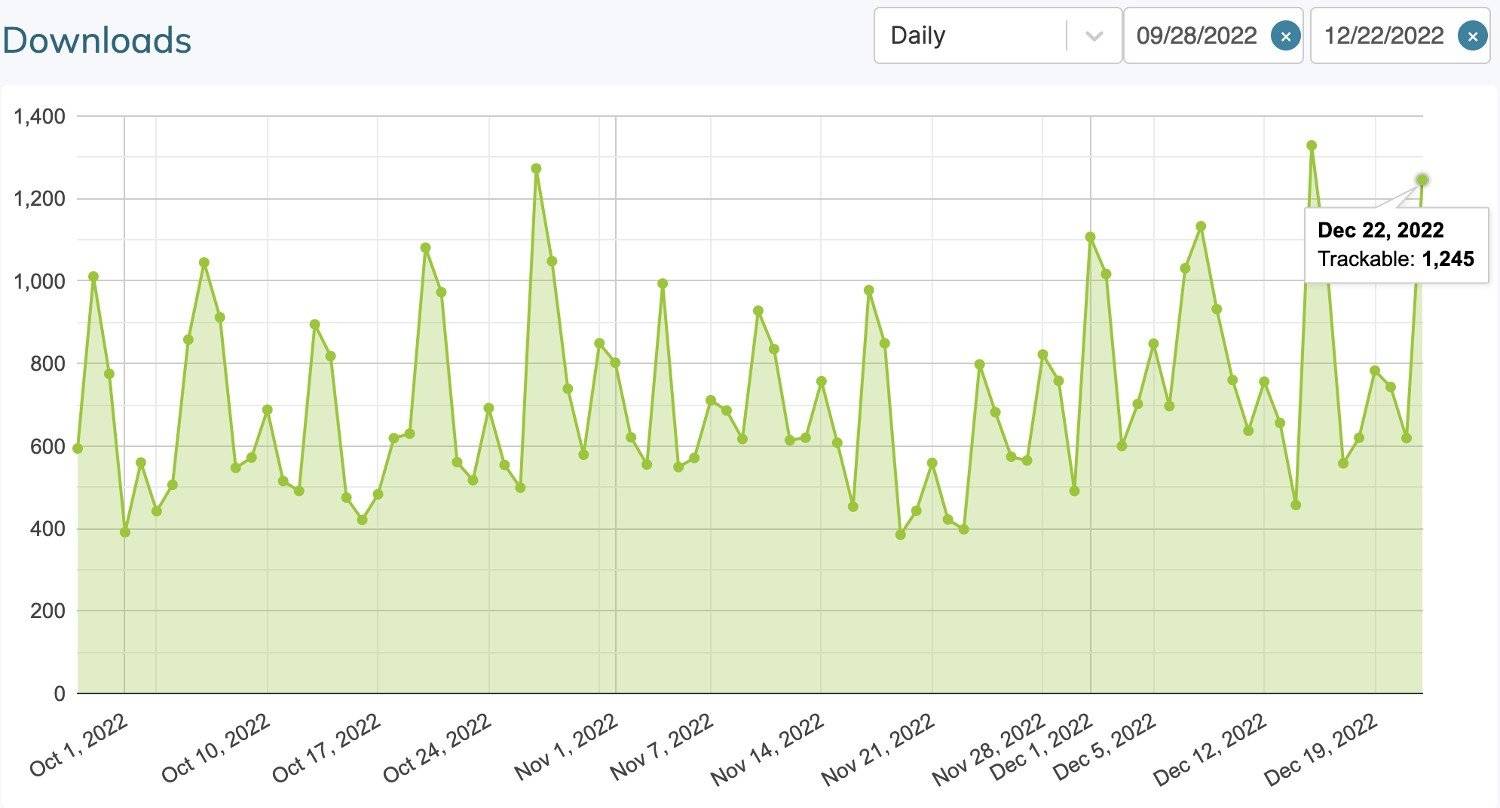
Analyzing podcast statistics
It’s important to use analytics tools like the one provided by your hosting platform to gain insights into listener demographics and behavior. This data can help you tailor your content for your listeners.
Castos has great analytics tracking for podcasts, but I’d also suggest checking out Chartable and using their tracker from the start of launching your podcast. It’s free for most of their tools and can provide you with great insights on your show.
No matter what way you go about it, make sure you are tracking your show from the start. Later on if you want to start approaching advertisers you’re going to need to have all of this information to pitch to them.
Monetization strategies
There are many ways you can go about monetizing your podcast but you for sure need to explore options that include sponsorships, affiliate marketing, merchandise sales, and listener donations.
Apple Podcasts has the option of offering early episodes and ads free versions of your show if someone subscribes on the Apple Platform. They do take 30% of this charge, which is highway robbery in my book, BUT it does build up over time to be a nice sum of money each month and it’s an easy way for your listeners to support you for a very small amount.
My favourite way of advertising on my podcast is by using affiliate marketing. Instead of having a company pay you one lump sum of money to advertise in X amount of your podcast episodes, you use an affiliate link that will give you a small amount every time someone makes a purchase using your link.
It’s a lot less money upfront, but over time this revenue can grow and build into a large amount.
You should look for affiliate programs that are part of a subscription so that every month that person pays their bill, you get a little portion of the sale. You can see how over time this can build into a nice monthly revenue stream from all the people just paying their bills.
Challenges and Common Mistakes
Avoiding copyright issues
I already mentioned this a little when I spoke about the theme music I use in my podcast but you need to be cautious about using copyrighted material without proper licensing or permission. If you’re unsure, don’t use it.
If you can’t afford any music or sounds but really want to use some, you can try and find some Creative Commons options. Usually, you’re free to use this music or these sounds as long as you give attribution to the content creator and they usually ask for a link back to their website in your show notes.
You can also start off without any music and as your podcast and revenue grow you can then go out and buy some to level up the show.
Consistency is key
Maintaining a regular release schedule is crucial for retaining and growing your podcast audience. Don’t let sporadic episodes ruin your listener’s experience and your goals for growth.
Determine how often you’ll release episodes, whether it’s weekly, biweekly, or monthly, and stick to your schedule.
I personally recommend weekly. The more you release episodes, the more likely it is you’ll be able to build a following of loyal listeners. I’d even suggest bumping it up to two episodes a week if you’re having success as that will help tell the algorithms that people love your show, and it will be recommended more.
No matter what you do, stay consistent. If you release on Wednesdays at 5:30am, ALWAYS release on Wednesdays at 5:30am. Your listeners will become accustomed to this and will build a routine around listening. This helps to build trust with you and your listeners.
My favourite podcast “Pivot” is released every Tuesday and Friday like clockwork, and I became such a fan because I could count on it being there for me every morning on those days when I’m ready to start my day.
Consistency will make or break your podcasting success.
Handling negative feedback
Not everyone will love your podcast, and that’s okay. Constructive criticism can help you improve, but don’t let negativity discourage you. At the end of the day, you keep doing you and the right people will become fans of your show.
Sometimes haters are just going to hate, and potatoes just need to potate.
Burnout and sustainability
Remember what I was saying about having a bunch of episodes recorded ahead of time and ready to go? Yeah, this is a part of why you should also do that.
Burnout is REAL y’all and sometimes we all just need a little break.
If you can batch-record episodes (recording more than one a day, maybe a few) and get it all done once a month, it will help you stay on track.
That’s where recording a bunch of episodes before you even launch comes in handy. It’s setting you up for success later down the road when you need a little break but you know you already have 2 months’ worth of content so you can go ahead and enjoy the beach a little extra in the summer instead of being glued to your recording studio chair.
Conclusion
Embarking on a podcasting journey as a beginner can be both exciting and rewarding. By following the steps outlined in this guide, you’ll be well-equipped to create and share your content with the world. Remember that consistency, passion, and dedication are key to achieving success in the podcasting realm. And, if you’re going to start a podcast, make sure you do it on your own website so you can be building two assets at once.
Thank you for reading my guide on podcasting for beginners. I wish you the best of luck on your podcasting journey. Remember, only you can bring your unique voice and perspective to the world of podcasting, so why not go for it!?
frequently asked questions
The cost varies depending on your equipment choices and hosting platform. Basic setups can start as low as $100, while more professional setups may cost $700 dollars or more.
The ideal length varies, but most podcasts aim for 20-60 minutes. It should be long enough to deliver value but not so long that it loses the listener’s interest.
While professional equipment can enhance audio quality, many successful podcasts start with affordable USB microphones and free editing software.
Yes, you can! Research and learning as you go can make for engaging content. Just be transparent about your knowledge level with your audience. Another great idea is to interview someone who IS and expert on the topic.
Choose a name that reflects your content and is easy to remember. Do some digging and find out if the domain and social media handles are available before you decide.
Consistency is more important than frequency. Start with a schedule you can maintain, whether it’s weekly, biweekly, or monthly.
Monetization options include sponsorships, ads, affiliate marketing, merchandise sales, and listener donations.
Be aware of copyright laws, licensing, and potential legal issues when using copyrighted material. Consider consulting a legal expert or when in doubt, just don’t use it.
Collaborate with other podcasters, run contests, engage with listeners on social media, and consider cross-promotions. Ask collaborators to send out an email blast about the episode and link to it on your website.
Continuously offer valuable content, interact with your audience, and seek feedback to improve your podcast’s quality and relevance.
